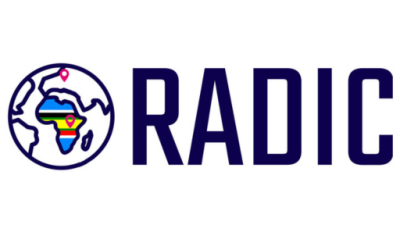Handbook of Digital Rehabilitation in Health Care for East African countries



Welcome to the Handbook of Digital Rehabilitation in Health Care for East African countries!
Great to have you here!
Before starting with the Handbook, please read the User Guide.
User Guide
In this user guide, we want to give you an overview of this handbook. We want to share with you in what context it was developed, who the authors are, what the vision is, how you benefit from this handbook and introduce you to the content. After reading this user guide, you can navigate through the handbook and use it to your own benefit.
Let’s start with the most important point: The handbook exists as an online version and can also be downloaded as a pdf. You can download the pdf version via this link. Both versions are identical apart from a few graphical representations.
Context
This handbook is a product of the multinational Erasmus + project RADIC (Rehabilitation for all through digital innovation and new competencies). RADIC started in March 2023 and runs until February 2026. The overall objective of the project is to contribute towards increased capacity of higher education to support and scale digital transformation in Eastern Africa, with the aim to ensure rehabilitation services for all. The project addresses the rehabilitation need for people living in East Africa with the support of digital transformation as it provides an opportunity to have more accessible and personalized models and system of rehabilitation in Eastern Africa.
Authors
This handbook was developed by the RADIC consortium, which consist of eight higher education institutions from Rwanda, Kenya, Tanzania mainland, Zanzibar, Finland, and Germany. For more details about the project and the project consortium, follow this link: https://www.jamk.fi/en/project/radic
Please note that the European Commission is not responsible for the content of this handbook. More information about the Erasmus+ programme: https://oph.fi/en/erasmusplus.
Vision of the handbook
This comprehensive handbook is designed to provide you essential knowledge and practical insights into the field of Digital Rehabilitation in East Africa. This handbook offers a foundational understanding of Digital Rehabilitation, exploring its concepts, principles, and applications in healthcare practice. You will gain insight into the evolution of Digital Rehabilitation technologies, their potential benefits to clients and the healthcare system, and their role in improving healthcare outcomes. Practical guidance and case examples will show you the effects
of Digital Rehabilitation and how you can apply the principles and technologies of Digital Rehabilitation in client’s rehabilitation. By highlighting successful best practices, this handbook aims also to underscore the importance and relevance of Digital Rehabilitation in contemporary healthcare. Tips and recommendations are included to assist rehabilitation professionals in integrating Digital Rehabilitation into their clinical practice.
Target group
This handbook is designed for rehabilitation professionals, educators, and students of healthcare studies who are interested in gaining a deeper understanding of Digital Rehabilitation and its applications in healthcare practice in East Africa. This handbook is intended for people who have no prior experience or knowledge on that topic. Whether you are a seasoned practitioner, an aspiring healthcare professional, or an educator seeking to enhance your curriculum, this handbook serves as a valuable resource for expanding your knowledge and skills in the field of Digital Rehabilitation.
If you are an educator and want to learn more about how to embed the topic of Digital Rehabilitation to your curriculum, you can also read the handbook for educators for Digital Rehabilitation. The educator's handbook focuses on digital pedagogy and includes a toolkit of methods that empower the learner in a digital environment and facilitate the learner's digital competences. The handbook for educators is also a product of the RADIC project and will be published in 2024 via this website.
Navigate through the handbook
The handbook consists of eight chapters. Each chapter deals with a topic on Digital Rehabilitation. All chapters besides chapter eight stand alone and can be read and worked on without knowledge of the previous chapters. Therefore, if you are only interested in a specific topic, you can jump straight to it. Chapter eight represents Frequently Asked Questions (FAQ) about Digital Rehabilitation.
The handbook covers the following topics:
- Introduction
- Best Practices
- Competencies
- Accessibility
- Potential barriers and strategies to overcome the barriers
- Technologies
- Ethics, security and regulatory frameworks
- Frequently Asked Questions
Each chapter is structured in the same way. First, the topic of the chapter is explained in a brief introduction. This is followed by the main content of the chapter divided into sub-chapters. At the end, all chapters have a brief summary and a list of references for the chapters. In some chapters, you will find practical exercises. The exercises are designed to deepen the content of the chapter, to reflect on it and to discuss the topic with other people. The exercises are designed so that anyone can solve them after working through the chapter, regardless of whether you are a rehabilitation professional, educator or student. The type of exercise can vary per chapter. Some exercises consist of direct questions, others of case studies in which you must think of scenarios that contribute to a solution of the presented problem. Other exercises encourage you to think about the problem and invite you to discuss it with your peers. For some exercises, we also provide you with the answers, which you can find on the respective page of the chapter.
Finally, yet importantly - please read the following terms of use
The handbook is accessible to everyone and can be used free of charge. However, the whole handbook is licensed by CC-BY-SA 4.0, unless otherwise specified. This applies to the web-version and pdf-version of this handbook.
That means that you are allowed to copy and redistribute the material in any medium or format for any purpose, even commercially. You are allowed to remix, transform, and build upon the material for any purpose, even commercially. The licensor cannot revoke these freedoms if you follow the license terms.
The terms look as follows:
- Attribution — You must give appropriate credit, provide a link to the license, and indicate if changes were made . You may do so in any reasonable manner, but not in any way that suggests the licens or endorses you or your use.
- ShareAlike — If you remix, transform, or build upon the material, you must distribute your contributions under the same license as the original.
- No additional restrictions — You may not apply legal terms or technological measures that legally restrict others from doing anything the license permits.
Now you are perfectly prepared to read and work with the handbook!
In case you have questions or suggestions concerning this handbook, please contact Angela Arntz via [email protected].







